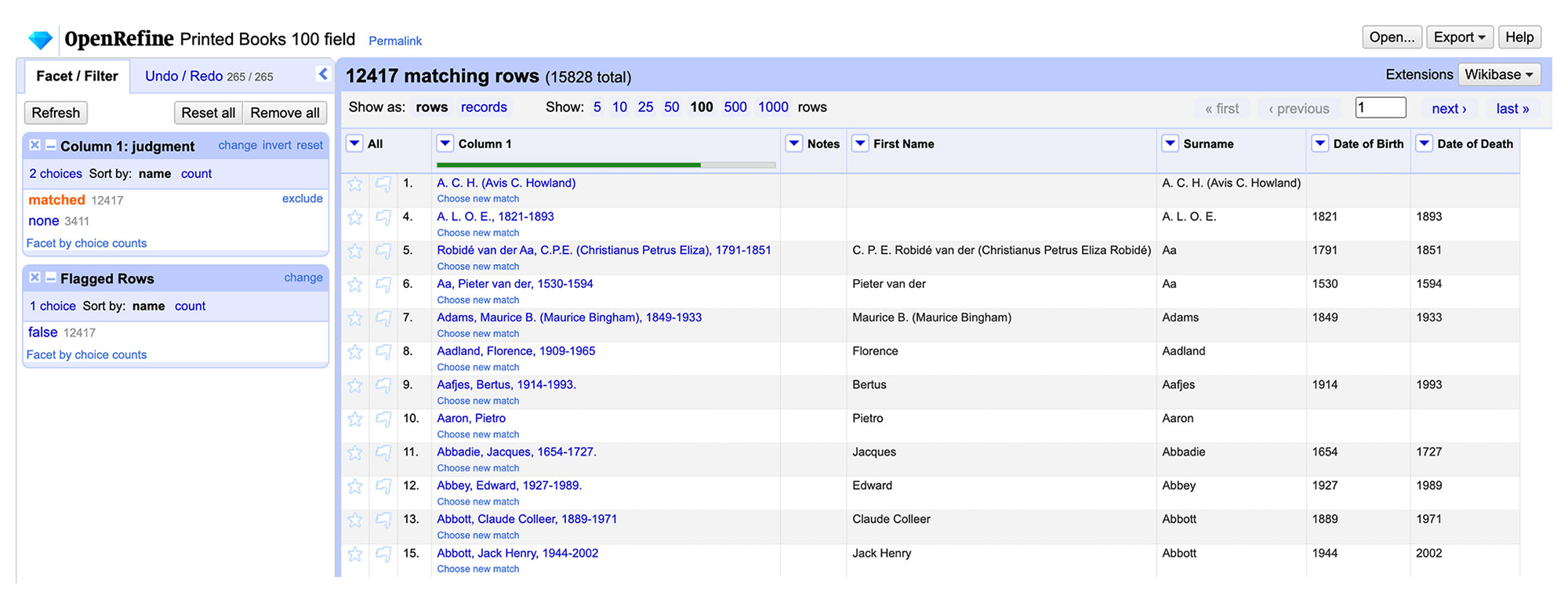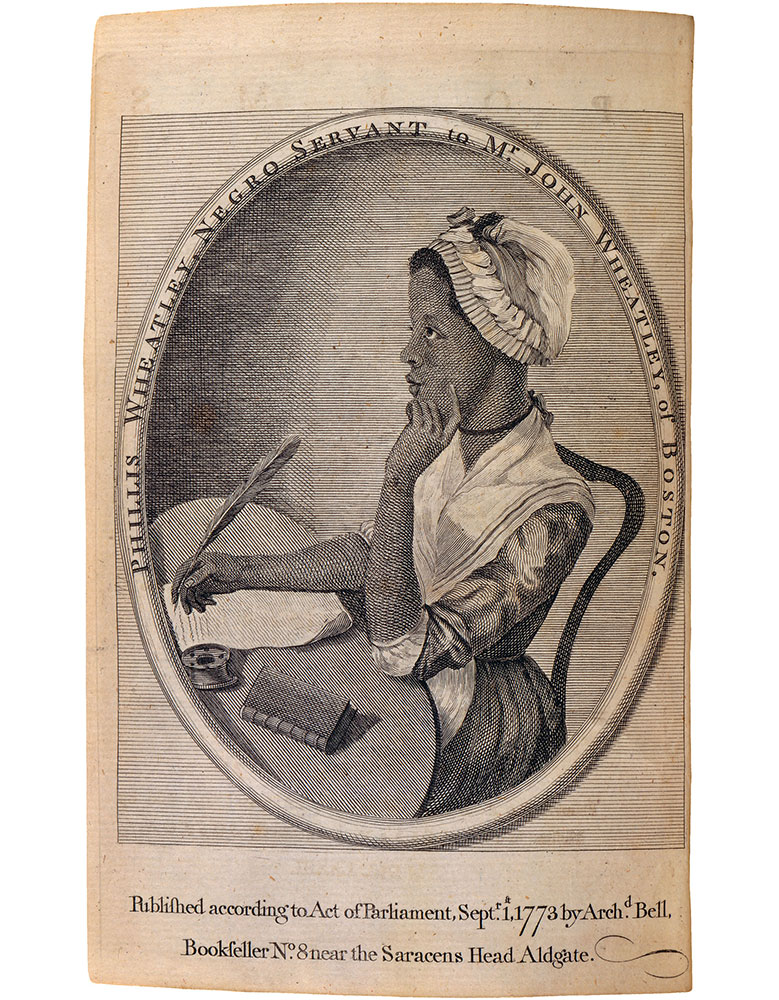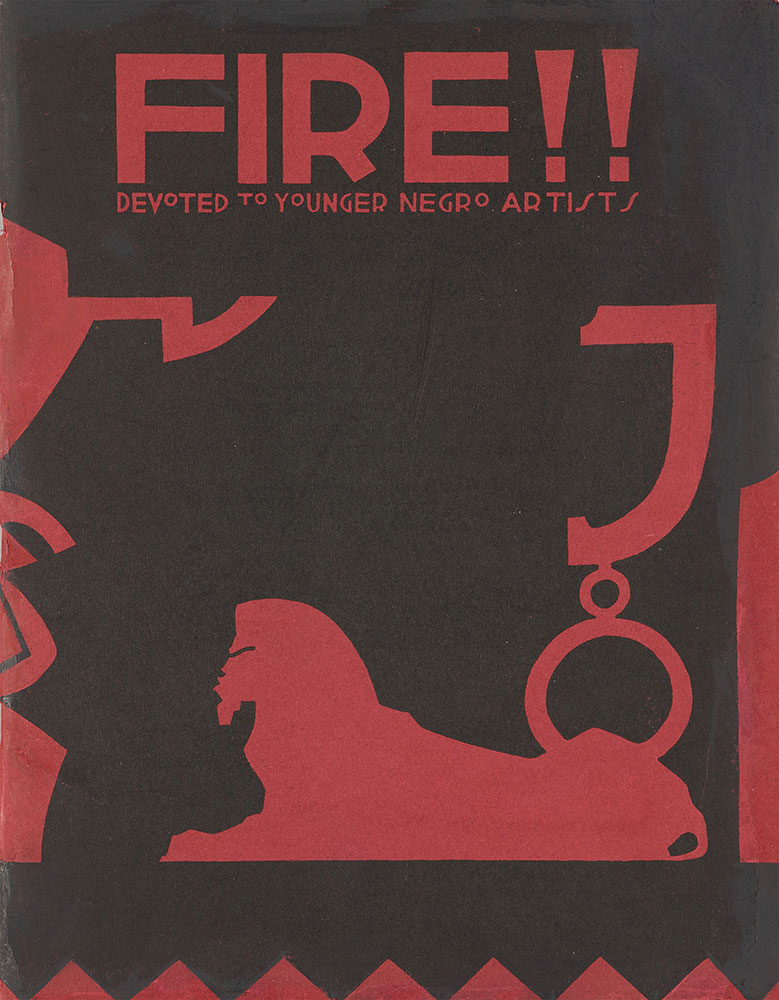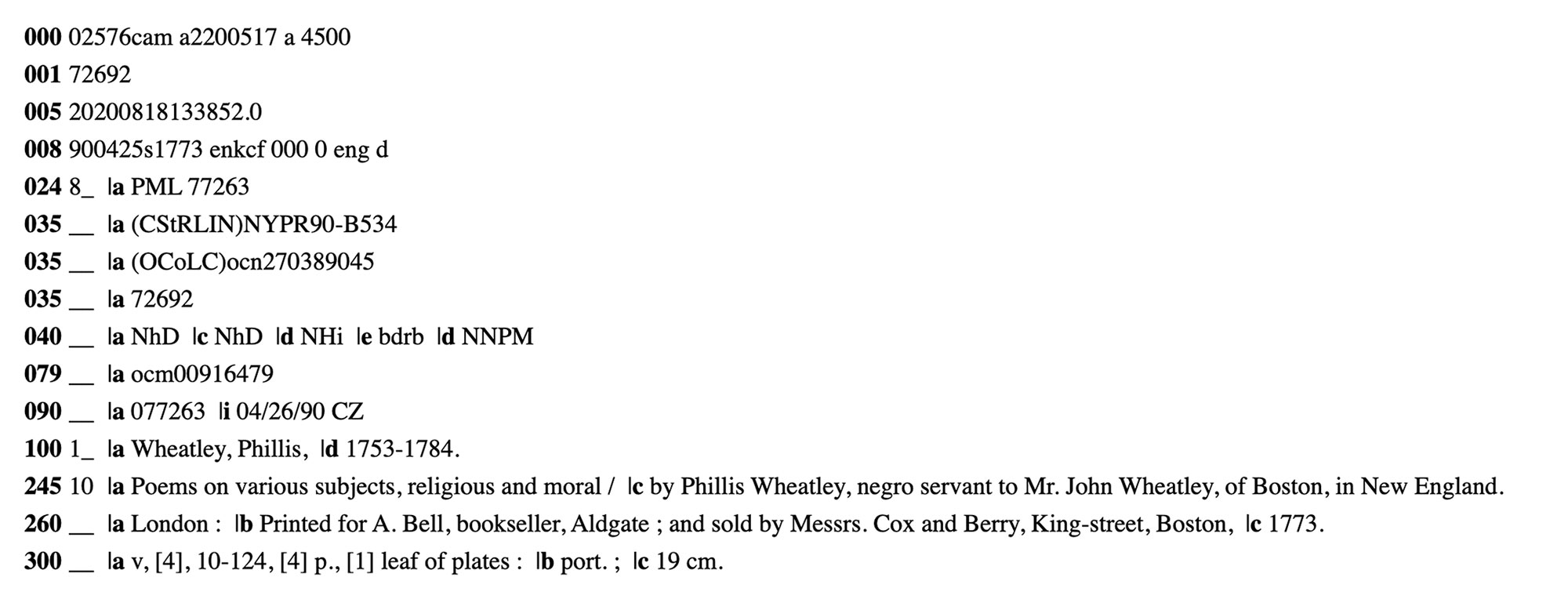This Black History Month at the Morgan Library & Museum, I introduce my fellowship project as a Belle da Costa Greene Curatorial Fellow. The project goal is a daunting one: to find and organize a comprehensive checklist of creators with Black, Indigenous, and other marginalized identities represented within the Morgan’s Printed Book collections. As an emerging BIPOC professional within museums and special collections, I am simultaneously honored and intimidated by the opportunity to investigate the considerable collections here. I approach this endeavor with an earnest excitement, as if the project were designed for me. To this project, I bring my passion for bringing decolonial methodologies into library and museum work and an integrity rooted in the search for my own identity. To search for, identify, research, catalog, write about, and share BIPOC representation within a collection formulated within the Western knowledge system presents a fascinating venture and a time-consuming one. The Printed Books and Bindings collections at the Morgan span printing history from the earliest printed ephemera to important first editions from the twentieth century to modern artists’ books. A survey of such a wide range of materials requires the development of a creative bibliographic process that results in a novel representation of the Printed Books collections. And, perhaps more poignantly, the project builds on existing critical cataloging initiatives at the institution to ensure a legacy of equitable accessioning processes, allowing our materials to serve a wider public. The BIPOC checklist project is ongoing and will surely evolve. This writing, done in February 2024, will discuss the initial approach, motivation for this work, and project strategy development and will conclude with a brief report on the survey process currently underway.
There has not historically been a focus on ensuring avenues of access for BIPOC seeking representations of themselves and their histories within memory institutions. These memory institutions—the libraries and museums we know today—are often the successors of private collections. In our modern understanding of heritage institutions we embrace and encourage an awareness of the critical positionality of the collector. We acknowledge that the historical practices of privileged collectors often did not reflect a wide range of identities and that cataloging practices did not focus on representation. “The decision to make things visible or invisible in museums is always related to power, as it involves a particular system of knowledge” (Wróblewska 2022, p. 22). As the cultural heritage industry remodeled itself from private collecting to public exhibition the objects, knowledge, and history that are not featured in the Western system of knowledge have become increasingly invisible. As a result of this epistemological gap and recent societal shifts in social justice, the heritage industry has observed a massive push to make diversity a priority in this new era of the public institution. However, hereafter in this writing I refrain from using the word “diversity”. Our industry is teeming with diversity-based goals, which in many instances represent a method of performing inclusive intentions without being specific enough to make concrete change. In designing this project, I choose to shift the focus away from diversity as a buzzword and towards practical methods to reexamine representation and improve visibility. In practice, it is less achievable to “increase diversity” than it is to consider collections as they are, but approach them with a critically investigative perspective.
If you are a Black scholar coming to the Morgan, it is not currently possible for you to access a list of the Black creators represented within the materials or search by any racial or ethnic identity. These access avenues do not yet exist. With the goal of increasing visibility in the Morgan’s collections motivating my work, I am embarking on the creation of this BIPOC checklist. Though my fellowship will expire, the design of the project ensures that future publics and scholars who come to the institution can enjoy an unambiguous way to navigate the collection catalogs by racial identity and an ability to find historically underrepresented histories with the Morgan’s collections. The who, what, where, when, and why of the project have been established—so now, how? The project has been divided into three phases: background research and strategy, survey and collection, analysis and writing. The outline below represents the strategy in effect so far.
Phase I – Background Research and Strategy
As an emerging professional and scholar both in the field and in these particular collections, I knew background research was crucial to project development. To appropriately cast a net wide enough to capture the extent of the Morgan materials, I needed to orient myself within both the histories of bibliography and the composition of the collections. The 148,000 volume institutional Reference collection was the natural first stop on this journey. Through some simple catalog searches, I found a plethora of material on library and book history, historical Black bibliography, and institutional collecting to launch me into strategy development. Early on I was able to ascertain certain collections within the Printed Books department—namely the Carter Burden and Gordon N. Ray Collections—that include well-known Black authors (the Hughes’, Hurtstons, and Haleys); however, I knew that a majority of the BIPOC creators within the materials wouldn’t be as obvious: I needed another method to find those that are lesser known. After weeks of this self-orientation within the materials and concurrent brainstorming with the Cataloging department, I began formulating a creative solution to address how to survey the tens of thousands of creators to find the invisible people of color hiding within the records.
Phase II – Survey and Collection
At the time of writing, I am transitioning into the second phase of the project: survey and collection. The objects in the Printed Books collection, which is best described as a collection of collections, are represented bibliographically with MARC records in the institution’s catalog, CORSAIR. MARC (MAchine-Readable Cataloging) records are how we ensure computers can understand the bibliographic information—like creator names, publication dates, and content descriptions—that we want to include in our catalog. Librarians use MARC by encoding information into “fields” that function as signposts, letting the computer know what data is incoming. Since the goal of the project is to find the people, the creators within the records, the primary focus of the first survey component looks at the MARC 100 field. This personal name entry is the main field in a MARC record, assigned according to various cataloging rules to the person chiefly responsible for the work.
The 100 field (here, fourth from the bottom) is used as the main entry in a bibliographic record. The main entry, assigned to the person chiefly responsible for the work, is extremely relevant to the checklist project and my search for BIPOC creators represented within the collection. This (partial) record displaying the bibliographic information for Phyllis Wheatley’s Poems on various subjects, religious and moral (PML 77263) will be included in the final checklist.
The cataloging department graciously supplied me with a dataset of all the unique MARC 100 field entries within the Printed Books Collections. As a result, I have a set of roughly 16,000 data points that need to be inspected individually to investigate the identities of those chiefly responsible for the works. This phase of the project utilizes a software called OpenRefine, an open source data manipulation tool loved by librarians and data curators everywhere. The reason for selecting this software is threefold: firstly, open source tools are free to use and usually come with a well-established user base for bug fixes and community assistance; secondly, OpenRefine is built to handle “large, messy” datasets, adjectives which perfectly describe the dataset for this project; thirdly, OpenRefine can reconcile data with external and web databases, making it possible to both mine data from these databases and recontribute novel data back into them. After patiently loading in the dataset and using General Refine Expression Language (GREL) expressions to standardize name formats, I coded OpenRefine to reconcile the 100 field personal names with personal names in Wikidata to associate them with a unique ID. Approximately six hours later, I returned to see seventy-eight percent (12,394 of 15,828) were adequately matched.

The image above shows my OpenRefine workspace for the project in process and the first fifteen rows of reconciled and linked data. Each match is hyperlinked to the related Wikidata entry for the personal name, providing a way to link the data to the wider web databases used globally and mine for more information.
At present, I am undergoing work to assign matches or exclude the remaining entries before attempting a second reconciliation against Wikidata, this time for ethnic identity/nationality. If all goes according to plan, this will allow me to approach checklist creation through a process of elimination. By automating the match process, I will be able to eliminate those creators found to be of non-BIPOC identity early and begin shrinking the dataset for further analysis and compilation.
As the project continues through future survey phases and eventually into creation of a deliverable, I predict that an abundance of both technical and contextual issues will arise (as many have already); yet, my motivation and enthusiasm for the project will not waver. All work aimed at increasing visibility of those rendered invisible by Western systems of knowledge—specifically within collecting institutions—will continue to be daunting and time-consuming work. Despite the challenges and potential pushback, those of us motivated by decolonial and social justice frameworks happily tap into the momentum towards a more inclusive museum, utilize the resources around us, and discover new ways to shed light on darker parts of the collections: helping make visible the invisible. My hope for this project is that not only will it bring a new, critical perspective to the Morgan’s collections, but that it will also inspire others within their own institutions to formulate creative bibliographic methods, illuminating BIPOC creators that may be involuntarily hidden.
References
- VAN BROEKHOVEN, LAURA. “ON DECOLONIZING THE MUSEUM IN PRACTICE.” Journal of Museum Ethnography, no. 32 (2019): 1–10.
- Wróblewska, Magdalena, and Csilla E. Ariese. “Creating Visibility.” In Practicing Decoloniality in Museums: A Guide with Global Examples, 21–36. Amsterdam University Press, 2022.
Sam Mohite
Belle da Costa Greene Curatorial Fellow
The Morgan Library & Museum



